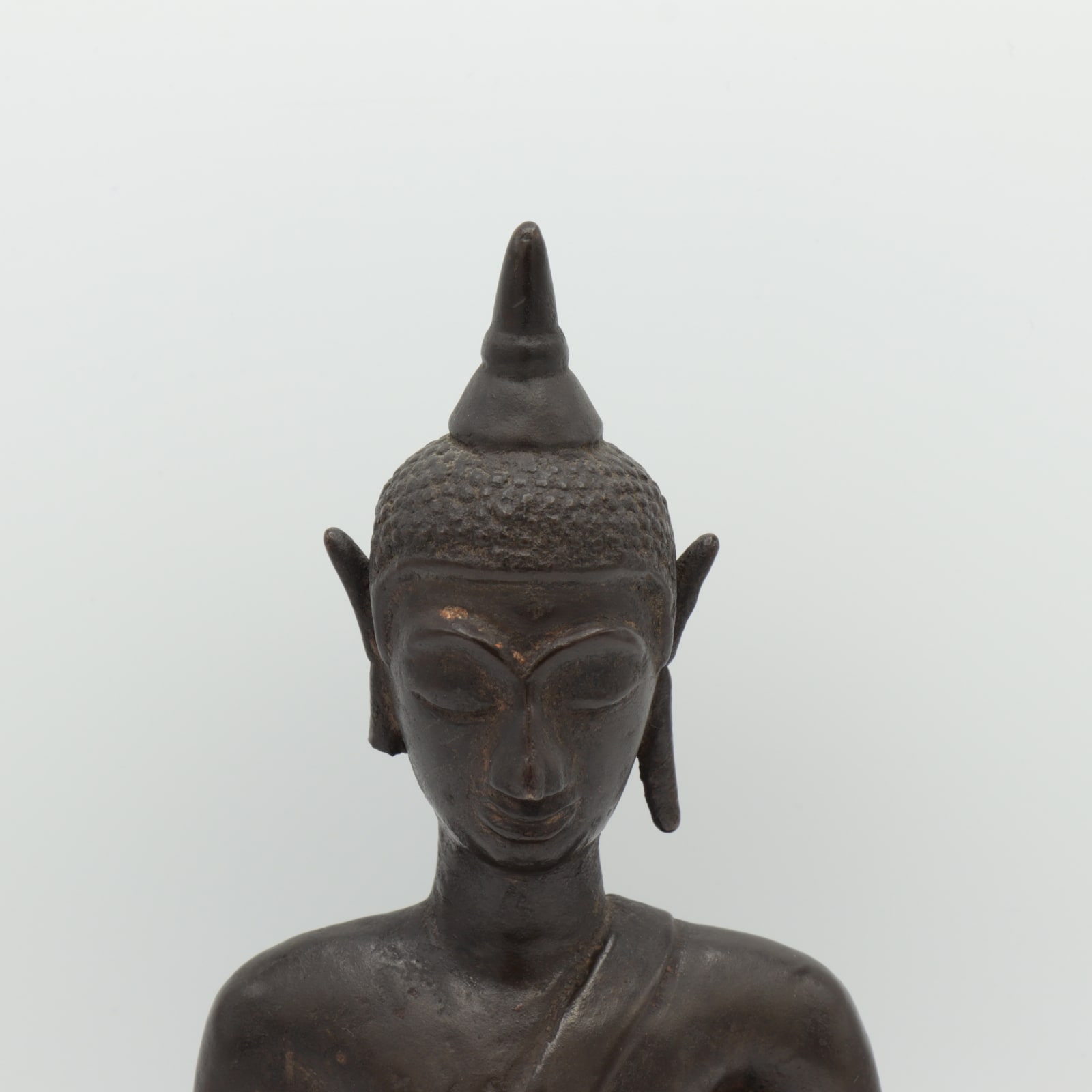Statue of Seated Buddha, 16th-17th Century CE
Iron
height 22 cm
height 8 5/8 in
height 8 5/8 in
AB.028
Further images
The emphasis in this iron sculpture of the Buddha is on simplicity. The smooth metal surface and the symmetrical shape formed by his folded legs and arms hanging downwards at...
The emphasis in this iron sculpture of the Buddha is on simplicity. The smooth metal surface and the symmetrical shape formed by his folded legs and arms hanging downwards at his sides contribute to a sense of peaceful elegance. He is seated on a shallow platform in a half-lotus position, with his right foot placed above his left knee. The iconographical simplicity reflects the restrained existence which the Buddha chose in order to pursue enlightenment. There are other visual reminders of this in the sculpture, for example the figure’s elongated earlobes. Within East Asian belief, particularly Buddhism, large ears are seen as a sign of wisdom and compassion. The Buddha is often depicted with elongated ears to symbolise his ability to hear the cries of those who are suffering, and his sympathy and willingness to help ease their pain. It is therefore a comforting image, as it reminds those who see it that there is hope for an end to their sufferings through the search for enlightenment and the compassion of those who have reached it. His clothing is highly simplified; the only details that show he is wearing a robe are a stripe across his chest and the filled in gap formed by his left arm, denoting the layer of fabric which passes behind his shoulder. The fact that little attention is drawn to his adornment is a reminder that he has given up all desire for elaborate material possessions. The pointed ushnisha on the top of his head is a typical characteristic of Buddha representations. It depicts a protuberance on the top of the head which is one of the Buddha’s key characteristics and which symbolises his enlightenment. His deeply defined eyebrows help to emphasise his downward gaze, giving him a peaceful expression. This conveys the inner serenity that he has been able to achieve through focused meditation.
The Buddha’s hands are held in the Bhumisparsha mudra, with his right hand reaching downwards across his right knee towards the ground, and his left resting face-up on his left thigh. ‘Mudra’ literally means ‘seal’ or ‘gesture’ and is used to refer to a pose, usually of the hands, which has a symbolic meaning and connection to an event in the life of the Buddha. The Bhumisparsha or ‘earth witness’ mudra represents the connection which the Buddha made with the earth when he was close to achieving Nirvana. The demon Mara was trying to frighten him and interrupt his meditation, and as part of this challenged him to produce a witness to agree that he had the right to achieve enlightenment. As the Buddha touched the ground, the earth itself appeared as his witness, allowing him to defeat Mara and prove himself worthy of reaching Nirvana.
The Buddha’s hands are held in the Bhumisparsha mudra, with his right hand reaching downwards across his right knee towards the ground, and his left resting face-up on his left thigh. ‘Mudra’ literally means ‘seal’ or ‘gesture’ and is used to refer to a pose, usually of the hands, which has a symbolic meaning and connection to an event in the life of the Buddha. The Bhumisparsha or ‘earth witness’ mudra represents the connection which the Buddha made with the earth when he was close to achieving Nirvana. The demon Mara was trying to frighten him and interrupt his meditation, and as part of this challenged him to produce a witness to agree that he had the right to achieve enlightenment. As the Buddha touched the ground, the earth itself appeared as his witness, allowing him to defeat Mara and prove himself worthy of reaching Nirvana.









